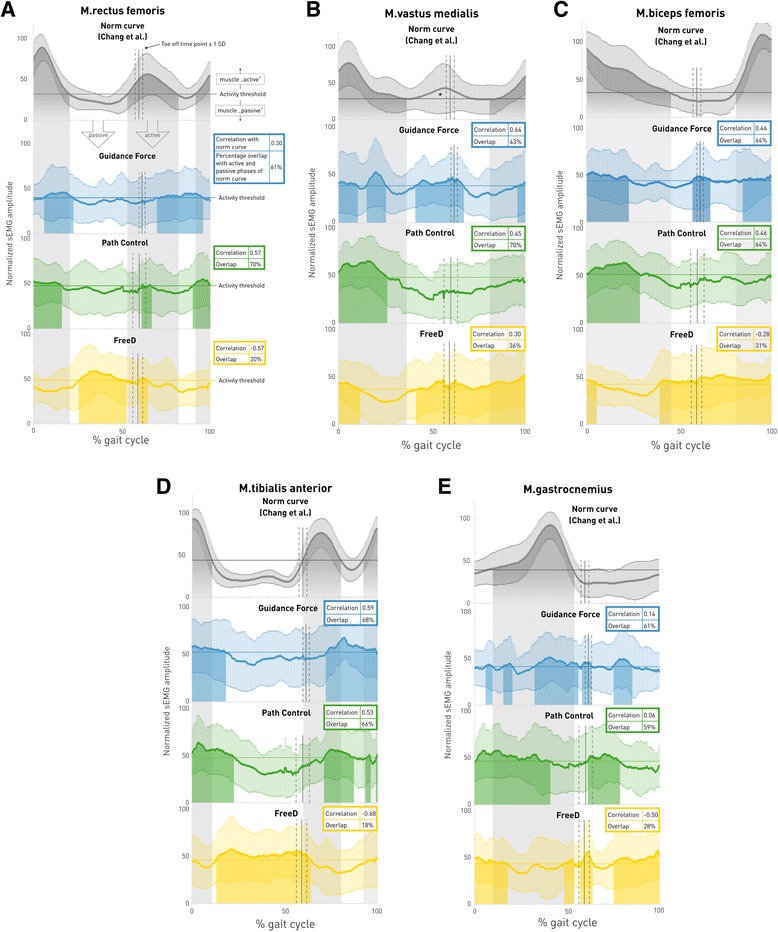Fig. 6.

Grand-averaged gait cycle sEMG profiles for each muscle and each condition. Linear envelope curves of the averaged gait cycle per muscle show mean ± standard deviation of the norm curve (adapted from Chang et al. [48]) and the three different walking conditions: Guidance Force (blue), Path Control (green) and FreeD (yellow). Muscle onset threshold was defined as 2 standard deviations above the minimum amplitude of the mean curve over all patients for each muscle separately. Grey banners in the background indicate that the muscle is expected to be “active” (= norm curve activity above the threshold); white banners in the background indicate that the muscle is expected to be “passive” (= norm curve activity below the threshold), see Fig. 6a. Colored shadows indicate that the muscle during that timepoint in the specific walking condition is active. Toe off time and shift from stance to swing phase is indicated with a vertical line ± one standard deviation (dashed lines). The “correlation” value refers to the Spearman correlation of the pattern of that specific walking condition with that of the norm pattern and “overlap” indicates the percentage of “activity” and “passivity” overlap of the pattern of that specific walking condition with that of the norm curve. *According to Chang et al. [48], the M.vastus medialis is not active here, despite supra-threshold activity
